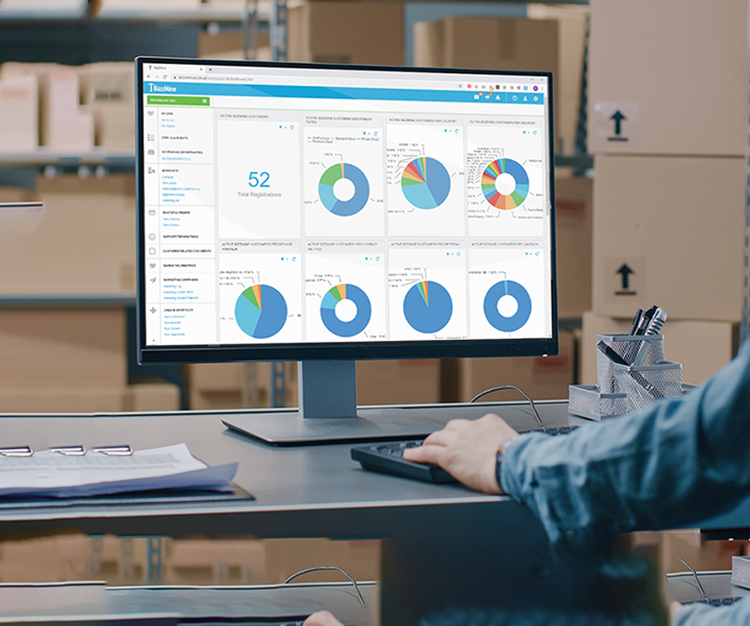1. Holistic Risk Management with an integrated Safety and Quality System
Managing separate platforms can be costly and inefficient, particularly as organisations grow or expand across locations. An integrated Safety Management System streamlines updates and allows for scalable integration with ERP, HR, and manufacturing systems. This scalability ensures the platform evolves with the organisation, regardless of its size or geographical reach, while also reducing IT overhead, simplifying application management, and cutting licensing costs. Electronic signature functionality poses significant compliance challenges.
2. Improved Compliance with Quality and Safety Regulations
A consolidated QHSE management system helps cultivate a robust safety culture by aligning all employees with the organisation’s protocols. With centralised training and engagement tools, employees stay informed and
prepared, fostering a safety-first culture across various environments,
from high-risk factories to dynamic construction sites. Additionally, an integrated Safety Management System ensures consistent communication and training materials, reinforcing safety practices enterprise-wide.
3. Boosted Operational Efficiency Through an Integrated safety and quality system
Combining HSE and Quality Management enables organisations to address risks across all areas in a cohesive manner. A single platform provides a centralised tool for risk assessment, incident tracking, and quality management, essential for both workplace and product risks. By integrating processes such as CAPAs (Corrective and Preventive Actions) and root cause analysis, companies can streamline workflows and prevent repeat incidents across diverse environments, from manufacturing lines to field operations. Having quality and safety in one system will be beneficial.
4. Better Decision-Making with Integrated Reporting in Quality and Safety Management
Navigating QHSE compliance management is complex, with industries often subject to multiple regulatory bodies and standards. An integrated Safety Management System centralises compliance processes, enabling organisations to meet requirements for OSHA, ISO, FDA, and CE standards, among others. This unified platform also simplifies audits and reporting, particularly for ESG and CSRD standards, reducing the compliance burden on teams while ensuring transparency and accuracy.
5. Stronger Employee Engagement and Culture with integrated Safety and Quality
Using separate platforms often leads to duplicate tasks and data silos, hindering operational efficiency. By integrating QHSE software, companies across sectors can manage occupational health and safety compliance, safety management, and quality reporting in a single solution. This integrated Safety Management System reduces administrative overhead, eliminates redundant data entry, and fosters seamless cross-departmental collaboration, streamlining operations and improving productivity.
6. Cost Savings with a Unified Safety and Quality Assurance Management System
In the age of data-driven operations, integrated QHSE platforms act as powerful tools for analytics and reporting. By unifying data across departments, facilities, or project sites, these platforms provide actionable insights that enable proactive risk management. Whether tracking equipment performance in manufacturing or monitoring compliance in chemical processing, cross-functional reporting empowers organisations to make informed decisions that align with QHSE priorities.
7. Scalability and Flexibility with an Integrated Safety and Quality Management System
For industries dealing with hazardous materials or high-risk operations,
such as chemicals or manufacturing, an integrated QHSE platform helps
companies monitor, report, and mitigate risks effectively. By providing an
end-to-end view of all QHSE processes, businesses can comprehensively
manage risks, ensuring safer operations for employees, contractors, and
the environment. This capability is particularly crucial for organisations
undergoing rapid growth or mergers, where standardisation and
scalability are essential.
A future-ready Safety management system for QHSE excellence
Integrating QHSE management into one software platform offers a comprehensive, efficient, and compliant solution across industries. From operational efficiency to IT consolidation, the benefits of a unified QHSE platform are vast. It reduces costs, simplifies compliance, and empowers organisations to navigate regulatory challenges seamlessly.
As industries continue to evolve, businesses that embrace a centralised
and digitised approach to QHSE will remain agile, scalable, and prepared
for both current demands and future opportunities.
Whether in manufacturing, pharmaceuticals, or other complex industries, a future-ready QHSE platform like Bizzmine ensures operational excellence,
compliance, and resilience in a dynamic market landscape.
Discover it yourself with one of our consultants in a short session. Have the right insights and see how an integrated QHSE management will help you work more efficiently.
%20(1).webp?width=2000&name=two-happy-businessman-working-laptop%20(3)%20(1).webp)







